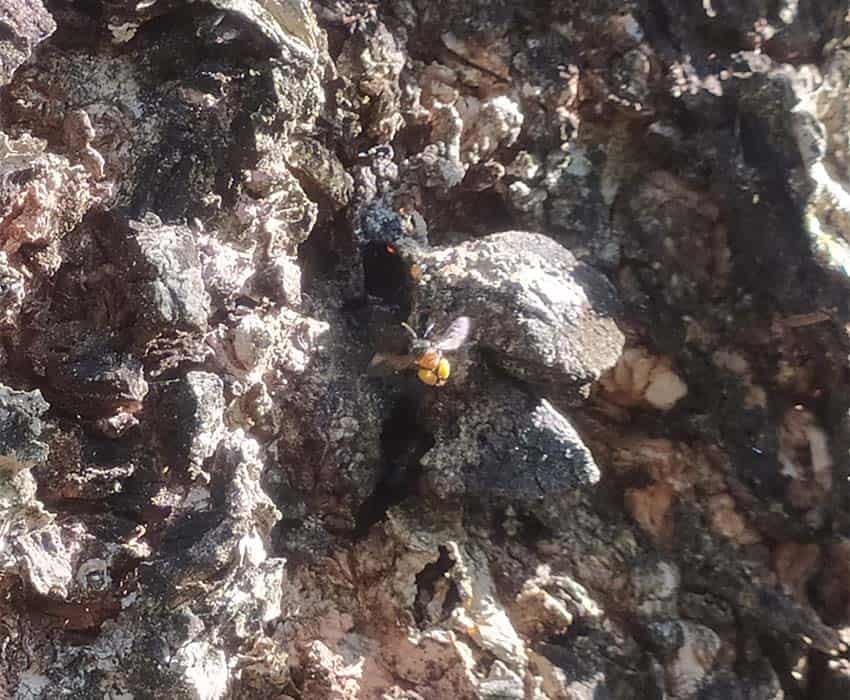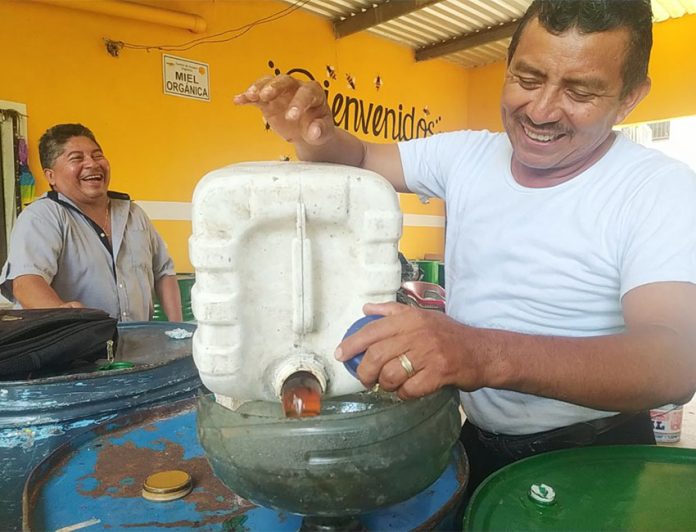A rare, stingless bee domesticated by the ancient Maya over 3,000 years ago could become extinct because of over-industrialization in its natural Yucatán habitat.
The once plentiful populations of Melipona beecheii are now in sharp decline due to rising deforestation, the use of pesticides and the decline of native beekeeping culture. Ironically, Mexico is the eighth largest global exporter of honey, with 63,362 tonnes produced in 2021.

Yucatán contributes over a third of this total.
That supply, however, comes almost exclusively from the widespread European honeybee, Apis mellifera, introduced by Spanish settlers in the late 18th century and commercialized soon afterwards. It’s estimated that Yucatán has less than 500 Melipona breeders, with each person holding an average of 10 colonies.
This small and defenseless native species is valuable because of the healing honey it produces, which contains antibacterial, antiviral and anti-inflammatory properties that can treat numerous chronic conditions.
Unlike the common honeybee, Meliponas construct abstract log hives in large, hollowed-out trees. The hives are called jobónes when removed from trees for cultivation.

The bees are docile, easy to manage and have small colonies that don’t form honeycombs but rather small pots that store pollen and honey, both of which are medicinal. That’s why villagers from Yaxcabá, just 18 miles from Chichen Itzá, are fighting to restore the ancestral practice and rescue one of Yucatán’s principal pollinators.
Josué Arcenio Ake Pech, 50, counts himself among the few remaining guardians in the state who still care for these creatures considered sacred by his forefathers.
“Xunan Kab — Melipona Beecheii in Maya — is on the brink of destruction because she doesn’t receive the historical value she deserves, nor is she valued enough for the medicine she provides,” said Don Josué, who has tended to Meliponas for over two decades. “She plays a vital role in the ecosystem, and we wouldn’t have such an abundance of fruit or any beautiful flowers were it not for her work.”
During the Postclassical Mayan period, the Yucatán Peninsula was the central hub of Melipona honey production and helped generate enough wealth for a middle-class society to flourish. Evidence of the spiritual importance behind this expensive commodity, as well as trade links with numerous pre-Columbian civilizations, remain on sculptures, murals and artifacts.

The most well-known artifact is the Madrid Codex, one of four ancient texts that survived the almost complete destruction of Mayan literature at the hand of colonial Spaniards in 1562. The well-preserved glyphic scripture held in the Museo de América in Madrid has 14 pages dedicated to Melipona culture and the role it played in rituals or medicine.
Several gods and deities take the form of Melipona Beecheii, the most important of which is Ah-Muzen-Cab. The Mayan bee god is often depicted upside down and holding a cluster of honey pots while wearing two jobónes as earrings.
“When I work with the Melipona, it makes me reflect on how my ancestors cared for them thousands of years ago,” said Don Josué. “It is amazing to think how their knowledge has been passed down to me by my grandparents, and that is why I do not see it as a burden but rather a legacy I must uphold.”
Most of the stingless bee breeders in Yucatán are men of advanced age, and when they abandon their activities, the Melipona colonies are lost. Don Josué was hit with this predicament 20 years ago when he salvaged half a dozen jobónes thrown out by a family friend without a successor. He offered a fair price to rescue them from certain destruction and took them to his home, where they live to this day alongside six other colonies.

Among the pile of precious logs was a jobón Don Josué understood to have been passed down for several generations, which could make it over 200 years old.
“When I placed my hand on this ancient jobón, I knew I had found a national treasure,” he said. “Some bees can live around three months, so can you imagine how many thousands of generations of Meliponas might have lived within this log?”
Don Josué only removes honey to prevent the colony from becoming overcrowded, which would risk collapsing the internal structure and kill the queen or her larvae. Neither does he split them into new hives because he respects the heritage of the colonies.
“It would be like destroying the palace of a queen with a royal lineage that may precede the arrival of the Spaniards,” he said. “Sometimes, they do not survive the transition because of the time, energy and resources it takes to build a new home. I could never forgive myself if they were lost forever because of my actions.”

Although Don Josué dedicates himself to his Meliponas, he makes a living working with Apis honeybees. A jobón may offer just two liters of honey a year compared to 60 liters per Apis hive, which is why the next generation chose the imported species. Furthermore, it can better withstand adverse weather conditions, is affected by fewer plagues or diseases and is better armed when facing attack from practically all intruders.
While only a handful of traditional beekeepers remain in Yaxcabá, over 300 registered locals harvest honey from Apis destined for foreign export. Don Josué has 70 such hives and is one of three intermediaries in the village who collect honey to supply Oaxaca Miel, the largest nationwide exporter.
The company sold 45,000 kilos of organic Yucatec honey in 2019 in the United Kingdom alone.
“This is the business side to honey production, but when it comes to the Melipona, it falls under tradition and legacy,” Don Josué said. “It is possible to make it more commercial, despite the seemingly impossible competition, but it requires too much time and effort with high risk for low yield.
“She is more delicate, and I could lose all my business in one heavy storm. For now, sadly, the production of Apis is the moneymaker and is growing faster while the Melipona is in rapid decline. I like the idea of opening up the rescue project to ecotourism, if I had more money to build her a palace fit for a queen, as she deserves.”
Across town, three local women have also embarked on a project to save the endangered native bee. Celia Delfina Díaz Peña, 40, Olivia Milu Lugo Maas, 31, and Claudia Beatriz Pat Cob, 25, took a course last year on Melipona production using modern boxed hives that are easier to handle. The three burgeoning entrepreneurs want to enter the organic market, especially with cosmetics and other beauty products that could be popular with tourists. The idea is to create soaps, creams, lip balms and shampoos containing Melipona honey mixed with other local plants and substances with restorative properties.
“We think this could be a good way to involve tourism, and we have seen others around the peninsula have some success with this,” said Olivia. “We want to restore meliponiculture in Yaxcabá and the surrounding area to its former glory. Soon we hope to sell boxes to the community and increase interest in this beautiful bee.
“She is extremely docile and can be kept safely in the garden around the family,” she added. “To see her dying out without proper intervention is distressing and makes us feel impotent.”
Olivia wishes the government wouldn’t focus so much on the Apis and leave the Melipona to one side, “but we are trying to do our bit to save her.”
Mark Viales writes for Mexico News Daily.
